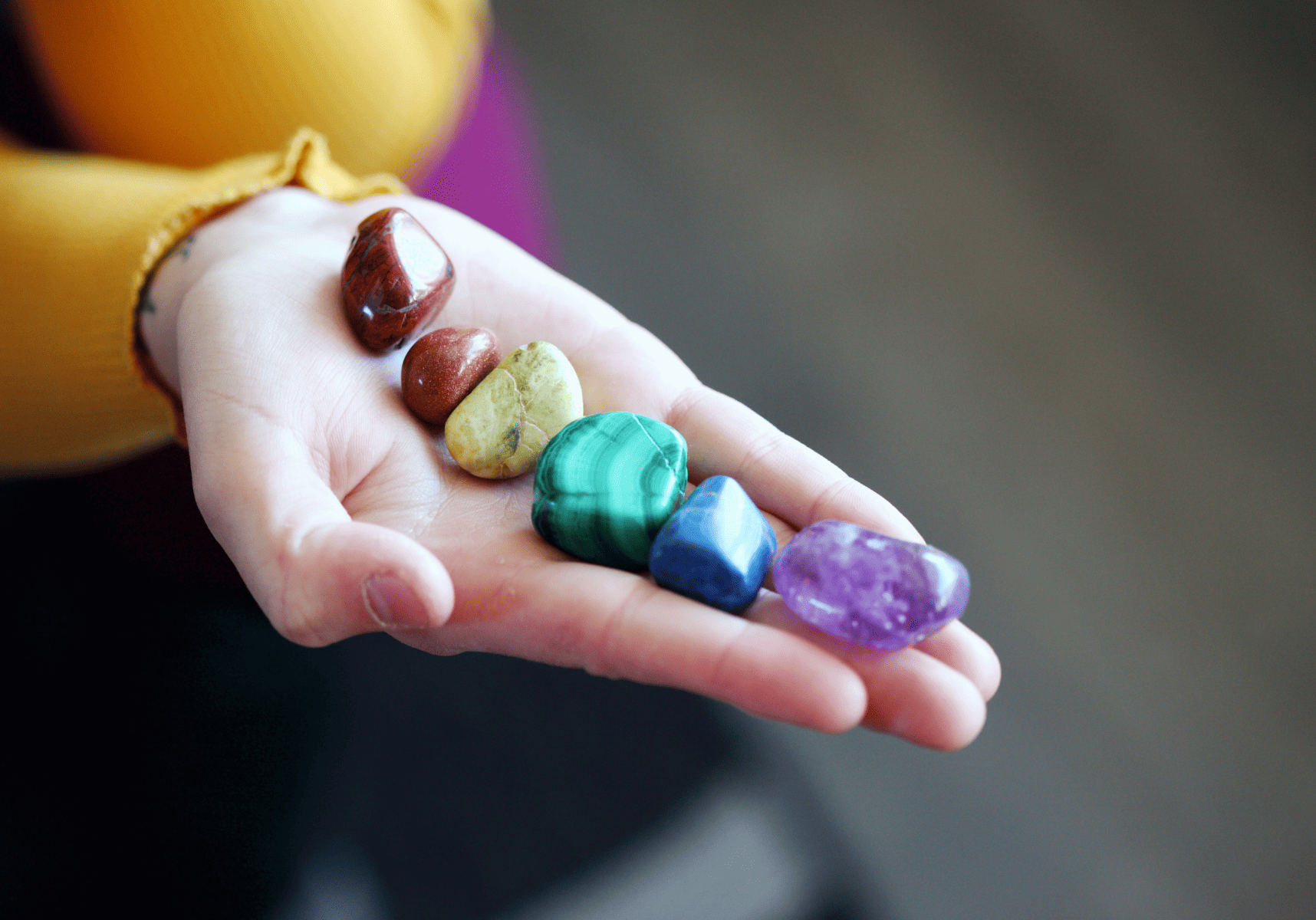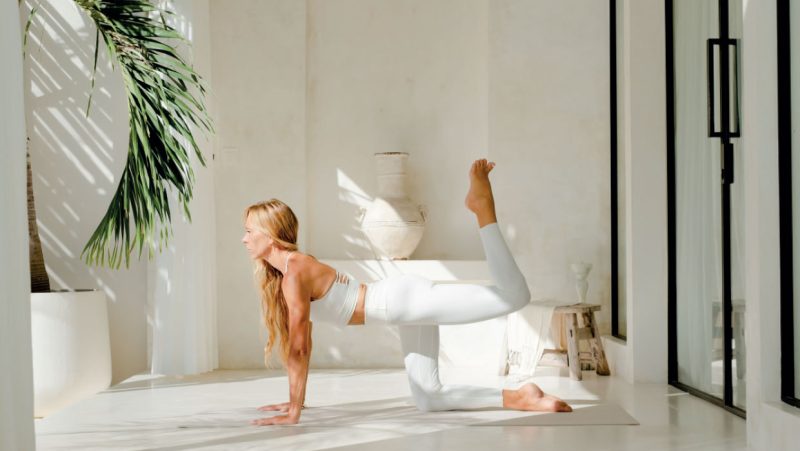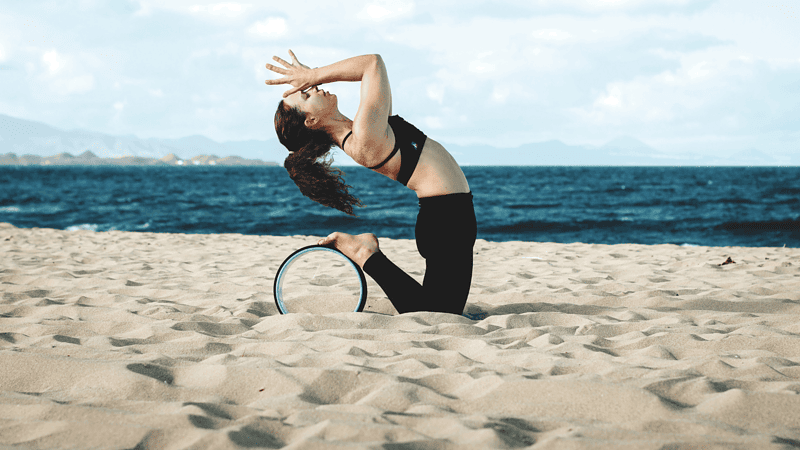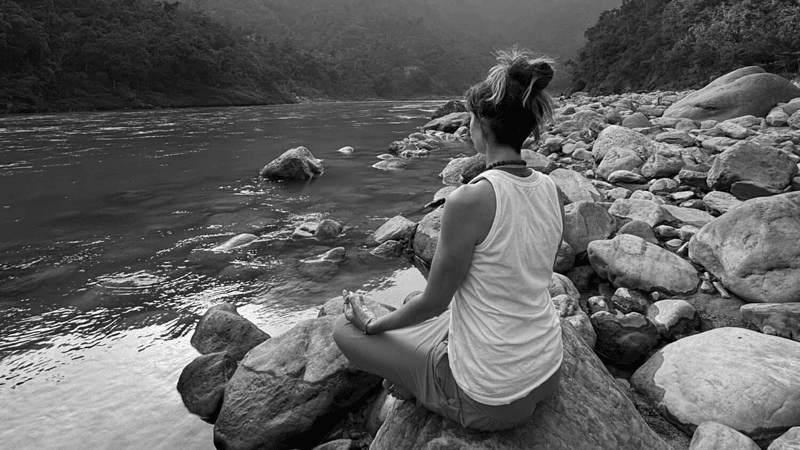
How can I use the 7 Chakras in my Yoga Practice
Balancing Your Inner Energy: A Journey into Chakras and Yoga Practice - Emma Mills
Reading time: 4 minutes
Firstly what are Chakras?
In Sanskrit, the word ‘Chakra’ means ‘disk’ or ‘wheel’ 7 small areas of spinning energy aligned along your spine, they begin at the root of your spine and travel to the top of your head or ‘the crown’.
Many people believe that an imbalance in Chakras or a ‘blocked’ Chakra leads to a feeling of unwell physically, and produces negative emotions or mental illnesses, some symptoms thought to appear when a Chakra is blocked are; pain in the body, feeling unsafe or insecure, low and unsettled mood.
To prevent this we can use breathing exercises, yoga and meditation to restore balance.
Let’s explore the different Chakras:
1. Root Chakra (Muladhara) – Located at the base of the spine, the pelvic floor and the first three vertebrae, it is red in colour and is responsible for your sense of security and stability, it is providing you with your base or foundation.
2. Sacral Chakra (Svadishthana) – Located at the pelvis this orange Chakra provides us with energy and creativity it can also govern how you feel emotionally.
3. Navel Chakra (Manipura) – The third Chakra sometimes referred to as the solar plexus is located just above the navel. Coloured yellow this Chakra is responsible for our intellect, willpower, self-confidence and clarity.
4. Heart Chakra (Anahata) – This Chakra is seen as the most powerful, connecting to the very base of our soul, the colour is a warm green, the location is in the centre of your chest near your heart, unsurprisingly it plays a strong role in our ability to love and show compassion.
5. Throat Chakra (Vishuddhi) – Located in the centre of the neck at the same height as the thyroid gland, this Chakra takes on the colour blue and posses the power to regulate energy in the body through temperature, growth and metabolism.
6. Third-Eye Chakra (Anja) – This Chakra is the sixth Chakra and is said to be located in the centre of your head, parallel to the middle of your eyebrows, it is linked to perception, awareness and spiritual communication, the colour linked to this Chakra is deep indigo.
7. Crown Centre (Sahasrara) – The seventh and final Chakra is located at the very top of the head and is associated with the colour purple, its energy links us to everything beyond our own ego, it is essentially our gateway and source point into spiritual enlightenment.
Now that we know a little more about the Chakras, how can we put this into our yoga practice?
Personally, I find it helpful to decide what it is I need help with, which area of my body or mind feels stagnant or blocked and could use the healing energy and power of Chakra yoga, or if I need to balance all of my Chakras I ensure I include a specific pose for each area.
Practising yoga regularly is an excellent way to break up stagnation within the body, it is believed that specific Hatha postures, meditation and breathwork have healing effects.
Below is a simple practice aimed at releasing blocked energy from each Chakra;
- Yoga pose for the Root Chakra – Sukhasana, also refereed to as easy pose is simple yet effective, it is performed by sitting on the ground or earth in a seated posture often crossed legged, align the body from the sit bones, straightening the back, feeling the shoulder blades naturally straighten, letting the arms relax on the knees, palms facing up for energy or down for grounding.
- Yoga pose for the Sacral Chakra – Upavistha Konasana or seated wide-legged forward fold pose is a hip opening posture you can come straight into after your seated easy pose by extending both legs outwards, flexing the toes and begin to lower the body in between the legs onto the floor or bolster/pillows, arms can be extended in front of you to help support the upper body.
- Breathing technique for the Navel Chakra – Kapal Bhati Pranyama or Skull Shining Breathing Technique. Coming back to an upright seated position, place your hands on your knees with palms open to the sky, take a deep breath in, as you exhale pull your stomach and navel back toward the spine, take as many of these breaths as comfortable, feeling your transverse abdominal muscles contract as you exhale, finish the breathwork by relaxing into a normal pattern of breathing, observe how you now feel.
-
Yoga pose for the Heart Chakra – Salambu Bhujangasana or Sphinx Pose. Come to laying on the tummy, bringing the elbows in directly under the shoulders, forearms are resting just in front, fingers spread wide, relax the shoulders away from the ears and shine the chest forward, gazing straight ahead, the thighs should be pushing into the mat.
-
Yoga pose for the Throat Chakra – Balasana or Child’s Pose. From your Sphinx Pose, ground the palms of your hands into the mat and lift the entire torso away from the mat whilst bending the knees so they come to sit underneath your hips, take a moment in a table top position, wrists positioned under shoulders, then exhale and guide your hips to rest on your heels, toes untucked, bend the upper body forward over your thighs, forehead comes to rest on the mat, breathing deeply here.
-
Yoga pose for Third Eye Chakra – Mukha Svanasana or Downward Dog pose. Lifting the hips back into a table top position, spread the fingers wide once again and ground the palms of the hands into the mat, tucking the toes, lift the hips and sit bones toward the sky in a V shape, maintaining the length in your spine, ensuring the base of the neck and head are relaxed.
-
Yoga Pose for the Crown Centre Chakra – Vrksasana or Tree Pose. Walk the feet to meet the hands and slowly roll up one vertebrae at a time until you are in a standing position, feet are grounded, shoulders relaxed in one long line of steady energy, gazing ahead, shift your weight onto your left leg, bringing the sole of your right foot onto ether the inside of your left leg or below the knee joint, muscles engaged, bring the hands together in front of the heart, repeat this on the opposite side.
The more we hone in on what our body is telling us, the more we can connect to which areas need attention, each Chakra will have a different relationship to our own lives and can provide a deeper understanding of ourselves and our minds.
Experiment with various Chakra practices to find what suits your needs best and embrace any emotions that may arise as you tap into that higher self, don’t be frightened to express yourself or your emotions as the arise, learning about your Chakras is a self discovery journey, offering in fact a lifetime of self exploration.
Enjoy the journey my friends, Namaste.







